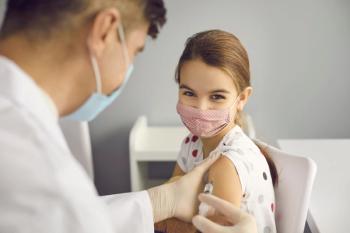In a change that was largely driven by females, antidepressant dispensing increased dramatically among adolescents and young adults following the onset of the COVID-19 pandemic. Study findings were published in Pediatrics.1
Although the rate of antidepressant dispensing was already on the rise before the COVID-19 outbreak in March 2020, it accelerated by 63.5% afterward—supporting claims that mental health among adolescents and young adults worsened during this time.
Key Takeaways
- Although antidepressant use was already increasing before March 2020, the COVID-19 pandemic caused a 63.5% surge in dispensing rates.
- The rise in antidepressant use was driven primarily by females, who experienced an almost 130% increase, compared to minimal changes in males.
- Based on current findings, future research should identify effective interventions that can improve short- and long-term mental health outcomes among adolescents and young adults.
Several studies have evaluated changes in antidepressant dispensing after March 2020, but none have targeted adolescents and young adults or extended past 2020. To address this, investigators used data from 2016 to 2022 to pinpoint the COVID-19 outbreak’s effect on antidepressant dispensing trends for those aged 12 to 25.
The study cohort included 18,395,915 individuals, of whom 221,268,402 antidepressant prescriptions were dispensed to. Adolescents were categorized as individuals aged 12 to 17 years and young adults were categorized as individuals aged 18 to 25 years.
More than half (64.4%) of the participants were female, a majority resided in the South (38.6%), and the mean (SD) age was 19.2 (3.9) years.
The most common group of medications evaluated out of selective serotonin reuptake inhibitors (SSRIs), selective norepinephrine reuptake inhibitors, tricyclic antidepressants, and other antidepressants, were SSRIs, in particular sertraline (24.1%), fluoxetine (18.5%), and escitalopram (16.3%). Data was gleaned from the IQVIA Longitudinal Prescription Database, an all-payer, national dispensing database that reports dispensing from the majority of retail, mail-order, and long-term care pharmacies in the United States.
Between January 2016 and December 2022, the monthly antidepressant dispensing rate rose starkly by 66.3% from 2575.9 to 4284.8 individuals per 100,000. Prior to March 2020, this rate increased by 17 (95% CI: 15.2 to 18.8) per month. After March 2020, the rate increased by 27.8 (95% CI: 22.1 to 33.4) per month. This change represented a 63.5% increase for the overall cohort.
The most dramatic increase in antidepressant dispensing month-over-month was measured among female adolescents. Before March 2020, the monthly dispensing rate for this group increased by 17.9 (95% CI: 13.7 to 22.2) per month, but after March 2020, the rate increased by 41.1 (95% CI: 32.9 to 49.2) per month. This change represented a 129.6% rise.
READ MORE: Patients Experiencing Depression Preferred In-Person Visits During the COVID-19 Pandemic
Although increases in monthly antidepressant dispensing were observed among both female adolescents and female young adults, a decrease was observed among male adolescents, and minimal changes were observed among male young adults. Given this disparity, investigators noted that the overall increase in antidepressant dispensing was largely driven by females.
“Multiple studies suggest that rates of anxiety and depression among female adolescents increased during the pandemic,” Kao Ping Chua, MD, PhD, lead study author, said in a release.2 “These studies, coupled with our findings, suggest the pandemic exacerbated a pre-existing mental health crisis in this group.”
While the decline in male adolescent antidepressant dispensing might appear to indicate improved mental health, investigators noted an inconsistent trend. During the same time, an increase in emergency room visits for suicide attempts and reports of sadness and hopelessness emerged among the demographic.1 A more likely explanation for the decline, investigators said, could be that males made health care visits less frequently during the COVID-19 pandemic.
Several other factors, such as long waitlists for psychotherapy after March 2020, likely contributed to the rise in antidepressant dispensing observed, especially among females. In the future, research should study how factors like access to mental health care and changes in treatment patterns further contributed to this increase.
“In my primary care clinic, I often heard from patients and families that they were facing 6-9 month wait lists for therapy during the pandemic,” said Chua.2 “In those situations, it didn’t make sense to withhold antidepressants and recommend a therapy-only approach.”
The increasing use of antidepressants, both observed before and especially after the COVID-19 pandemic, suggests a concerning mental health trend among adolescents and young adults. Future research should prioritize finding effective interventions that can improve short- and long-term mental health outcomes among these groups.
READ MORE: Mental and Behavioral Health Resource Center
References
1. Chua K, Volerman A, Zhang J, Hua J, Conti RM. Antidepressant dispensing to US adolescents and young adults: 2016–2022. Pediatrics. Published online February 26, 2024. doi.org/10.1542/peds.2023-064245
2. Antidepressant dispensing to adolescents and young adults surges during pandemic. News release. EurekAlert. February 26, 2024. Accessed February 26, 2024. https://www.eurekalert.org/news-releases/1034994


















































































































